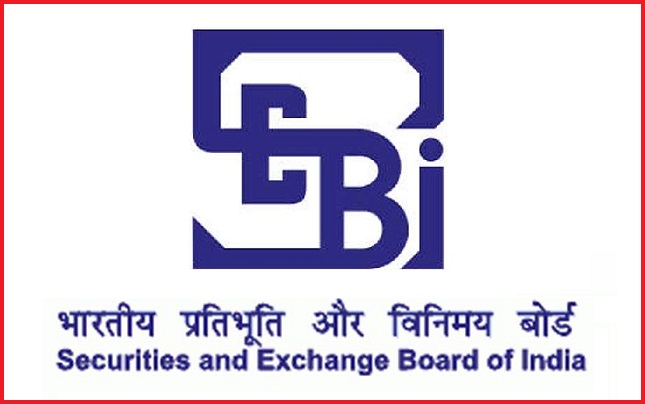In this blog post, Devyani Pokhriyal, a recent Law Graduate and a student pursuing her Diploma in Entrepreneurship Administration and Business Laws from NUJS, Kolkata, provides the difference between Listing Agreements and Listing Regulations.
Listing Agreement
Listing Agreement is the basic document which is executed between companies and the Stock Exchange when companies are listed on the stock exchange. The main purposes of the listing agreement are to ensure that companies are following good corporate governance. The Stock Exchange on behalf of the Security Exchange Board of India ensures that companies follow good corporate governance. The Listing Agreement comprises of 54 clauses stating corporate governance, which listed companies have to follow, failing which companies have to face disciplinary actions, suspension, and delisting of securities. The companies also have to make certain disclosures and act by the clauses of the agreement.
Listing Regulations, 2015
On 2nd September 2015, the Security and Exchange Board of India (SEBI) notified about the Security and Exchange Board of India (Listing Obligations and Disclosure Requirements) Regulations, 2015. (Listing Regulations 2015). The listing regulations will apply to the companies recognized on the stock exchange. Section 2(52) of the Companies Act provides for the listed companies and any companies which have listed its securities under-recognized stock exchange and hence the listing regulations would be applied to them. The primary objective of bringing this regulation into force was first to align the Listing agreement with the Companies Act, 2013.
Secondly, to make a single regulation for requirements under different securities listing agreements. The regulation 23(4) and 31A was to be made into immediate effect, about passing the of ordinary resolution instead of a special resolution in case of all material related party transaction subject to related parties from abstaining from voting on such resolution, in line with the provisions of the Companies Act, 2013. And the reclassification of promoters as public shareholders under various circumstances. The Regulation has been converted to a consolidated form, to make all the listed agreements a single structured document for easy referencing. The Listing Regulations have been sub-divided into two parts viz.,(a) substantive provisions incorporated in the main body of Regulations; (b) procedural requirements in the form of Schedules to the Regulations.[1]
Basic features of the regulations are as follows:
- Chapter II of the Regulation provides for the guiding principles governing disclosure and obligations of listed companies. The chapter provides for the principles for the listed entities for periodic disclosure and corporate governance followed by the companies.
- Chapter III of the Regulations provides for a common obligation for listed companies, in the matter of compliance, the appointment of a compliance officer, filing on the electronic platform, etc.
- Chapter IV to IX provides for the obligations applicable to specific securities incorporated in different chapters.
- Chapter X to XI provides for the responsibilities to compliance given to stock exchanges to regulate, monitor and take action for compliance measures.
Differences Between Listing Regulation and Listing Agreement
Changes made within the listing agreement:
- Change for the separate period of the transmission of securities: The listing agreement provides for the transfer or transmission of securities and issue of the certificate within 15 days from the date of such receipt of a request for transfer[2]. While the listing regulation provides for the transfer and issue of the certificate within 15 days from the date of such receipt of request for transfer provided that the listed entity shall ensure that the transmission requested is processed for the securities held in the dematerialised mode and physical mode within 7 days and 21 days respectively, after receipt of the specified documents.[3]

- Change made regarding the requirement of sending notice to other stock exchange for the close transfer of books: In the listing agreements, while closing the transfer of books, the companies have to send notice to the concerned stock exchange as well as other stock exchanges in an advance of 7 working days[4]. While in the new regulation notice is to be given to the concerned stock exchange in an advance of 7 working days[5].
- Extension of period for the disclosure to stock exchange: In the listing agreement, the disclosure regarding all the dividends or cash bonuses recommended or declared or the decisions to pass any dividends or interest paid and date on which dividends shall be paid/dispatched, the decision on buyback of securities[6] is to be made within 15 minutes of the Board Meeting. While the listing regulation provides for the disclosure to be made within 30 minutes of the board meeting regarding all the dividends or cash bonuses recommended or declared or the decisions to pass any dividends or interest paid and date on which dividends shall be paid/dispatched, the decision on buyback of securities.[7]
- In the listing agreement, there is a provision of promptly notifying the stock exchange of short particulars on any increase of capital whether by the issue of bonus shares through capitalization, or by the way of right shares to be offered to the shareholders or debenture holder, or in any other way. Short particulars of the reissue or shares or securities held in reserve for future issue or the creation in any form or manner of new shares or securities or any rights, privileges or benefits to subscribing to, short particulars of any alterations of capital, including calls[8]. While the listing regulation provides for at least 30 minutes of the closure of board meeting for, promptly notifying stock exchange of short particulars of any increase of capital whether by issue of bonus shares through capitalization, or by the way of right shares to be offered to the shareholders or debenture holder, or in any other way. Short particulars of the reissue or shares or securities held in reserve for a future issue or the creation in any form or manner of new shares or securities or any rights, privileges or benefits to subscribing to, short particulars of any alterations of capital, including calls.[9]

- It has been mentioned in the listing agreement of prior intimidation of at least seven days in which the final result shall be considered[10]. In the listing regulations, a five-day prior notice is to be given when the financial result is to be considered by the stock exchange about the board meeting.[11]
- The listing agreement provides for the provision ensuring that the RTA and/or the In-house Share Transfer facility, as the case may be, produces a certificate from a PCS within 1 month of the end of each half of the financial year, certifying that all certificates have been issued within 15 days of the date of lodgment for transfer, sub-division, consolidation, renewal, exchange or endorsement of calls/allotment monies, and a copy of the same shall be made available to the SE within 24 hours of the receipt of the certificate by the Company[12]. While the listing regulation provides for ensuring that the share transfer agent and/or the in-house share transfer facility, as the case may be, produces a certificate from a practicing company secretary within 1 month of the end of each half of the financial year, certifying that all certificates have been issued within 30 days of the date of lodgments for transfer, sub-division, consolidation, renewal, exchange or endorsement of calls/allotment monies and ensures that certificate is filed with the SE simultaneously.[13]
- Provision wherein MD or the WTD appointed to provide compliance in the listing agreement has been given, whereas in the listing regulation, the CEO, and the CFO have to provide a compliance certificate to the board of directors.
- New provisions have been added in the listing regulations which were not there in the listing agreement, regarding the preservation of documents. Two types of documents have to be maintained; one document is to be permanently preserved while the second record is to be reserved for the period of not less than eight years after the completion of the particular transaction.
Conclusion
The main motive for the introduction of the listing regulation was to streamline all the regulations for all the securities so that it becomes convenient for the companies to follow one set of regulations rather than following two sets of regulation and also to avoid any confusion, which occurs on the overlapping of two sets of regulations. Also, with the introduction of a new set of regulation, the disclosure process to the SEBI has been improved, as more and more companies are under the strict surveillance of the regulatory mechanism and hence the process of compliance with The Securities and Exchange Board of India (SEBI) regulations by the companies have improved. With the introduction of the listing regulations, the contractual obligations have been converted to a legal requirement, which gives the regulations a legal recognition.
[divider]
References:
[1] http://www.sebi.gov.in/cms/sebi_data/attachdocs/1441284401427.pdf
[2] Section3(c) of the listing agreement.
[3] Section 40(3) of the Listing Regulation 2015.
[4] Section 16 of listing agreements
[5] Section 42(2)(3)(5) of listing regulations.
[6] Section 20 (a) &(c) of the listing agreement
[7]Schedule III, Part A, Para A (4)(a)&(c)
[8] Section 30 listing agreement
[9] Schedule III, Part A, Para A (7)
[10] Section 41(III)(a)
[11] Section 29(1)(a) & proviso to 29(2)
[12] Section 47(c) of the listing agreements
[13] Section 40(9)&(10) of the listing regulation.
 Serato DJ Crack 2025Serato DJ PRO Crack
Serato DJ Crack 2025Serato DJ PRO Crack











 Allow notifications
Allow notifications




Brilliant and precise.